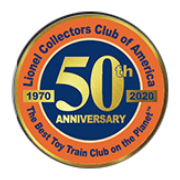Recap From Omaha
Omaha - 54th Convention July 7-13, 2024
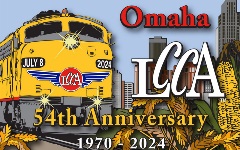
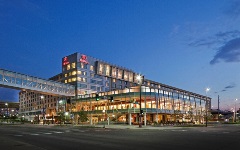
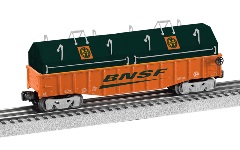
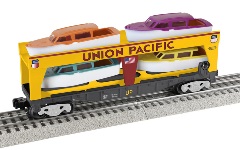
Omaha. Is it a poker game? Is it steak? Is it the home of the Oracle of Omaha? Or would it be forever remembered as the convention host city for LCCA’s 54th Anniversary Celebration! Omaha was originally selected for our 50th Anniversary to host this event near the home of its founder, Jim Gates. But like most of 2020, Covid got in the way, postponing this exciting venue till 2024. Yes, the tours were planned, member response was great, and then, oops.
Bringing us forward to 2024, our rescheduled visit to Omaha is now history. The fun, the events, the tours, the excitement, and most of all the renewed camaraderie we have come to expect at an LCCA convention were again a trademark for our LCCA 2024 Omaha Convention.
Omaha is more than a mid-sized Midwestern city surrounded by farms and cornfields. So much more. It is a lively, vibrant city full of great places to see and visit. Our Monday ride on the Boone & Scenic Valley Railroad was followed by a week of tours taking us to the most exciting and most anticipated venues and, of course, to a few ‘hidden gem’ locations. We stayed at the downtown Hilton Omaha hotel, just blocks from the Old Market. And yes, Omaha was an ‘instant replay’ event, celebrating the best the LCCA and its members have to offer. We met a little earlier this year – July 7-13. Our extended modular groups were there, as were plenty of our member vendors in the trading hall. Our friends at Lionel held again their annual seminar while attendees prepared to wrap up a full week of activities.
This year travel by air was easy, with Eppley Airport only 4 miles from the Hilton Omaha with its courtesy shuttle. Onsite parking was at no cost for registered hotel guests, non- hotel guests were offered a reduced daily fee.
Boone and Scenic Valley Railroad Excursion, a Trolley Ride, Back Yard Tour, and B&SVRR Museum
Boone, Iowa and the Boone and Scenic Valley Railroad was our highlight destination for this year’s annual train excursion. This beautiful two-hour ride through the gorgeous Central Iowa countryside included a stop on the bridge that stands well over 150 feet above Bass Point Creek. This is the tallest single-track interurban railroad bridge in the U. S. The train stopped us at the bridge for great photo opportunities of the valley and countryside, plus a nice box lunch. Two notes: A handicapped accessible coach was available, and the concession car only accepted cash, no credit cards. The B&SVRR is not only a passenger train line; but it also provides daily freight service in the area. This is one of a very few railroads that operate (all three) steam, diesel, and electric power on a weekly basis. Will we get steam for our trip? We must wait and see.
During this tour we will divided our time between the James H. Andrew Railroad Museum and History Center, walk through the outside yards and restoration back shops, and took an antique trolley ride from the B&SVRR to downtown Boone and back. We also anticipate 3-6 special surprises during our bus ride to Boone and back. Hint: What happened to the items made for the first Omaha convention scheduled for 2020? Will they be available for members who take this excursion? How about pins or B&SVRR pickup trucks? Take the tour and see what happens!
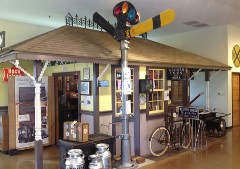
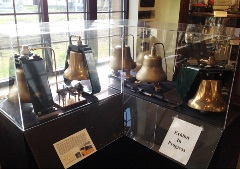
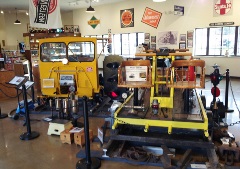
The Florence Experience
This morning’s tour took us to the town of Florence, NB, a quaint little railroad town just north of our guest hotel. The town was established in 1854 and is now home of four venues we visited. The Florence depot was built in 1887 and was located in downtown Florence. It closed in 1966 and was moved to its present location and opened as a museum in 1971. It is now an historical railroad museum filled with articles from the past.
Another stop will be the old Florence Mill near the banks
of the Missouri River. It was constructed by the Mormons in
1846-47 and was their winter headquarters. Supplying both
flour, meal, and lumber in the area helped them survive the
harsh winters. Today it is a museum and art center that has
been preserved for all to enjoy.
Another stop was the old Bank of Florence. This small unique little building has been restored to its original condition with an upstairs lodging filled with period objects from the past. It also served the community as a Post Office and a telephone switchboard. One final stop was the Mormon Trail Center. With interactive exhibits, artwork, and artifacts, visitors can experience what it was like to live as Latter-day Saint pioneers during their westward migration to the Salt Lake Valley. During the harsh winter of 1846-47, over 300 pioneers died and were buried in the cemetery across the street from this museum. The museum portrays the hardships and heartaches the Mormons encountered in the winter of 1846. In all, over 3,400 lived here until it was abandoned in 1848. Recently Florence was incorporated into the city of Omaha and is now officially part of this beautiful Midwest city.
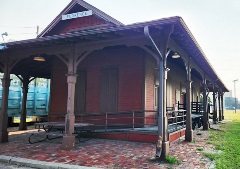
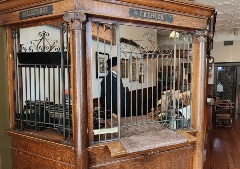
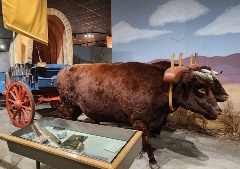
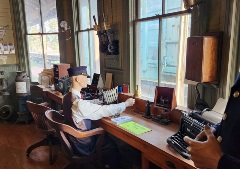
Boys Town and Strategic Air Command Museum
We began this exciting tour by visiting world famous Boys Town where guides boarded our buses and took us on a driving and walking tour of these magnificent facilities. We walked through the museum, Father Flanagan’s home, and the Catholic church including the burial site of Father Edward J. Flanagan, founder of Boys Town. In his home, we could view a model of the McKeen car, which we rode at our LCCA 2019 convention in Reno and was manufactured in Omaha.
Since its founding in 1917 by Father Flanagan, Boys Town has transformed tens of thousands of young lives. While visiting the campus, we took in the beautiful Dowd Memorial Chapel, the final resting place of Boys Town’s founder. Inside the museum, we discovered how Boys Town programs developed and how it continues its mission to change the way America cares for children and families. We also saw the Best Actor Oscar presented to Spencer Tracy for his role as Father Flanagan in the 1938 film “Boys Town.” At the Visitors Center, we were able to view the World’s Largest Ball of Stamps. How much do you think it weighs? How many stamps do you think it took to make this gigantic sphere?
Thirty minutes south of Boys Town was the Strategic Air Command & Aerospace Museum, one of the greatest museums of flight in the United States. We were able to see the restoration area from a viewing platform where the EC-135 is being restored. The huge B-52, B-56, B-58, B47, F-101 and the F-11 were all in Hanger A. We then made our way to Hanger B where are located the KC-97, the C-119, the MIG-21, the B-29, and the F-102. we couldn’t miss the Space Walk, the Cold War Display, and the Vulcan outside as we entered the grounds. A Flight simulator and a gift shop completed the package at the museum.
Only a mile away was our last stop, and a great one – the world famous “Round the Bend Steak House” where we enjoyed dinner in our own private room. This may not be the fanciest restaurant, but it is where all the cattlemen and local ranchers come to eat. Established in 1995 by Ron Olsen, it has been run by his son T. J. since 2012. This restaurant hosts the Testicle Festival each Fathers’ Day when they serve over 2,000 pounds of these delectable treats. The two-meat buffet dinner included drinks (Coke, tea, & coffee) and desserts, and alcoholic beverages were available from the cash bar.
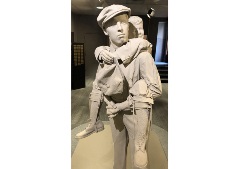
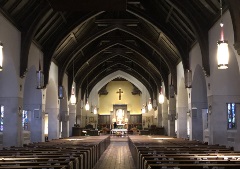
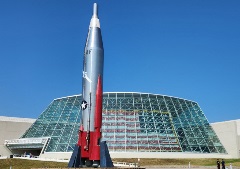
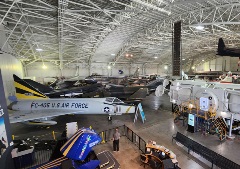
The Lincoln Experience - Museum of American Speed, Nebraska History Museum, & the State Capitol Building
Nebraska’s capitol city, Lincoln, is less than an hour’s bus ride from Omaha. On our visit to the State Capitol Building, we walked the halls of the capitol building with its 110 feet tall rotunda built of Indiana limestone. Standing stately at one end of the Centennial Mall, it features glass wall murals depicting the Blizzard of 1888 and the Arrival of the Railroad.
At the other end of the Mall, we visited the Nebraska History Museum to learn about the history of this great state. We experienced 13,000 years of history and learned about the people and cultures that have made Nebraska their home. We found out what life was like before and after statehood, saw unique artifacts, and discovered the stories that have defined Nebraska.
On our third stop, we visited the huge Museum of American Speed. This museum began almost 35 years ago with 150,000 square feet of exhibits. Since then, it has added much more space, and we were pressed for time to see all of it on this one trip. One display has the five millionth Model “T” preserved just as it rolled off the assembly line a century ago. The world’s largest collection of pedal cars (over 500) is also on display. We saw racing cars, show cars, classic cars, hot rods, street rods and many more. This is one of the largest, most diverse, and entertaining motor museums in the country.
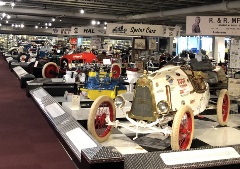
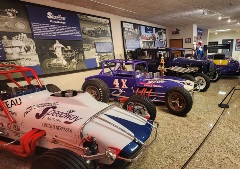
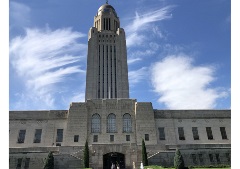
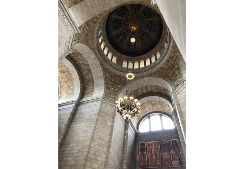
Omaha Layout Tours
At the Oak View Shopping Mall, we found 16 different sets of model trains all running at once. They ranged from the tiny Z gauge (1 to160 scale) up to Standard andG gauge and everything in between. Even Kenefick Park was modeled on these layouts.
We then visited Mark Nelson’s home layout with numerous trains running on different layouts throughout his basement train empire where it is Christmas 365 days a year. Mark also heads up the Oak View Mall layout that we visited earlier. Next Russ Quimby welcomed us into his home to see his trains running through a scenic landscape. Not only is Russ a Lionel train buff, railroading in the real train world is his occupation. Joe Snook was our our third home layout. On March 16, 2019, Joe had a flood disaster that almost wiped out his collection. A dam broke up stream creating a river of water that completely covered the first floor of his home. His home had to be demolished, and he constructed a beautiful new home on the same site with a train room (16 x 37) for his restored train collection, and it’s high and dry!
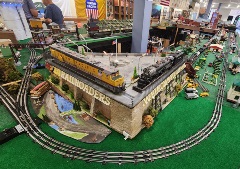
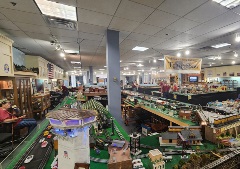
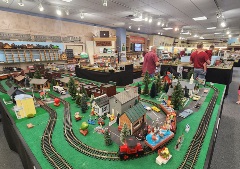
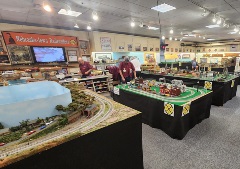
Omaha Union Station, UP Big Boy, and UP Centennial
The Durham Museum is located in the beautiful Omaha Union Station, the first railroad depot with art deco architecture, designed by Gilbert Stanley Underwood. This gorgeous building opened 98 years ago and is still in supreme condition. During World War ll, over 10,000 passengers from seven different railroad lines passed through it every day. The museum includes a model train layout that measures 30 feet wide by a whopping 120 feet long. There were many real railroad cars to walk through and displays and exhibits depicting railroading on the Plains. However, even if there was nothing to see inside, the magnificent structure and its architecture alone would have been well worth our visit.
Our second stop was the Lauritzen Gardens and Kenefick Park. On top of the hill in Kenefick Park overlooking Interstate 80 stand the two biggest engines ever produced. The Big Boy Steam engine #4023 and the gray and yellow Centennial Diesel #6900 rest proudly against the Nebraska sky. On the way up or down the incline, We spotted a carving in the stone wall of the McKeen car which were all manufactured in Omaha. We anticipate having trolleys available to help transport our members.
The Lauritzen Gardens’ beautiful botanical exhibit offered hundreds of plants housed in a large glass conservatory with flowing brooks and waterfalls. Outside the conservatory were the Festival Gardens, Victorian Garden, Tree Peony Garden, Rose Garden, Children’s Garden, Garden of Memories, Herb Garden and the Founder’s Garden. And we didn't miss the Arboretum and Bird Sanctuary. At the back of the Gardens, we found a G scale model railroad that runs by your feet, at your waist, and overhead, with bridges and tunnels made of natural plantings. There were seven Union Pacific trains continuously running through models of familiar Omaha landmarks. This was a fantastic garden layout with seven named lines, including one called the Big Boy Line.
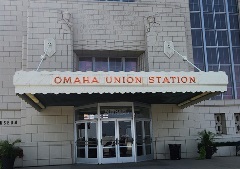
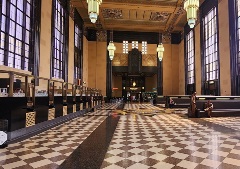
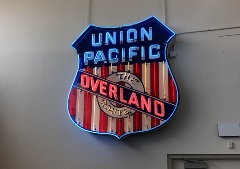
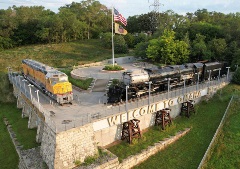
Hot Shops Art Center, the Full Fledged Brewery, and the Wimmer Train Museum
Inside a huge antique brick warehouse structure from a century ago, we found many unique craftsmen making and selling their wares. More than 80 vendors in the Hot Shops Art Center offered painting, glass blowing, jewelry, sculpture, photography, design printmaking, fiber printmaking, fiber art, woodworking, metalworking, musical instrument construction (violin/fiddle), and many other mediums. The artists loved to talk with us about their works and were happy to answer our questions.
Next stop was the Full Fledged Brewery where we took a tour of its facilities. The tastings of its local brew were offered separately from our tour. You had a choice to partake on your own and pay as you go. This brewery, owned and operated by Marshall and Dessie Redmond, is widely celebrated in Council Bluffs, Iowa, as well as across the river in Omaha.
On our last stop, was a visit to the outstanding collection of Bill & Judy Wimmer and learn their fascinating story. Bill retired in 2008 after serving the railroad industry for 51 years at both the Union Pacific and the Chicago and Northwestern Railroad. Bill served 34 years as U.P.’s vice president of engineering which included design, construction, maintenance, signals, track programs, signals, and structures. Bill and Judy met while Judy was working for the U.P. as an inspector. She was following in her father’s footsteps who worked on the railroad for 51 years. During the last 60 to 70 years, this couple has collected railroad memorabilia from not only the U.P., but every other railroad they could find. It is all now on display at their location in Beaver Lake where they will welcome us to see this fabulous collection. See the real Plymouth U. P. Industrial Loco, the switcher Diesel engine, the 100-year-old handcar, the U. P. Maintenance car, the telephone operators’ switchboard, and many, many sets of railroad china. They also operated a model train layout with Lionel FasTrack® where they run extra-long U. P. passenger trains on their “Train Model City” exhibit. All together there are over 10,000 pieces of railroad memorabilia in this collection.
Note: Bill was head of the company that brought the Big Boy and Centennial up the grade to Kenefick Park. We enjoyed his photos of that rigorous process.
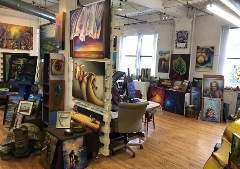
Council Bluffs, Iowa Experience
Our morning in Council Bluffs, Iowa, just across the Missouri River from Omaha, included four stops. First, the General Dodge House is a French second Empire style mansion designed by William Boyington of Chicago for General Greenville Mellen Dodge in 1869 for a sum of $35,000. For a home built on the frontier, it was elegant with central heat and running water. General Dodge was chief engineer for the Union Pacific and supervised the construction of the U.P. portion of the Transcontinental Railroad. He was assigned to this duty by his personal friend President Abraham Lincoln. Dodge’s garage was built with a turntable because backing down the steep slope was almost impossible for the early automobiles with their faulty brakes. Therefore, they would drive up the hill, into the garage and onto the turntable which would rotate the car 180 degrees so it could be driven forward back down the driveway. This garage sits between the Dodge House and the August Beresheim home which we also visited. All rooms were open to us and were in their original settings. Glad we didn’t miss this National Historic Landmark.
Another stop was the RailsWest Railroad Museum housed in a Romanesque Revival structure also known as the Rock Island Railroad Passenger Depot. This was a daily stop for the Rocky Mountain Rocker, the Midwest Hiawatha, and the Arrow. The depot was built in 1899, as two one story brick buildings with pink granite trim connected with a massive Spanish tile roof. The larger building contained the passenger waiting rooms and offices with baggage rooms in the smaller building. This museum houses the history of Council Bluffs and its integral connection to the railroad. In the museum yard, there is rolling stock, including the CB&Q 915 locomotive (4-6-0), an Omaha club car, Burlington caboose, Plymouth 5700, U.P. 814 locomotive (4-8-4), a U. P. boxcar, the Railway Mail Service (Railway Post Office), and a Rock Island caboose #17130. We viewed and climbed on these items as we pleased. Also, there was a model train layout running in the depot lobby. Another unique stop was the historic revolving Squirrel Cage Jail. The jail was built in 1885 and was in continuous use until 1969. It was acquired by the Council Bluffs Park Board in 1971 for preservation and was named to the National Register of Historic Places in 1972 by the United States Government. The Historical Society led an effort in 1977 to save the jail and today owns and operates the facility. The signatures and dates of many of its infamous prisoners remain scratched in the cell walls. This jail has a 90,000 lb. metal structure that rotates like a Lazy Susan by a single jailer using cranks with gears. The jailer brought the prisoners to him instead of him going to them. Every door but one faced a concrete wall. The only way to get out of this pie-shaped jail was when the unit was turned so your door was in the one open space the jailer controlled. You would have to witness this Squirrel Cage Jail House to believe it. This may be the most unique site we have ever visited!
Last stop was the Union Pacific Railroad Museum housed in the historic Carnegie Library building. Don’t get it confused with the Durham Museum located in Union Station in Omaha. The President Lincoln collection on display includes artifacts from his rail car and his funeral. In this museum we could travel through 150 years of American railroad history, walk through three passenger cars from the 1950s, be in awe of over 300 pieces of Union Pacific silver and fine china, and learned about Hollywood stars traveling by luxury passenger trains before the airplanes arrived on the scene. The entire first floor covers the building of the Transcontinental Railroad, and one of the original Golden Spikes is on display.
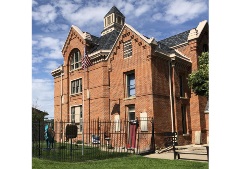
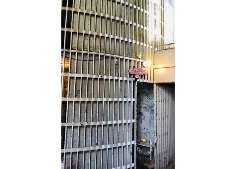
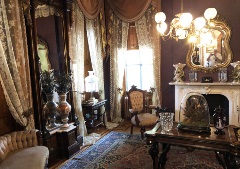
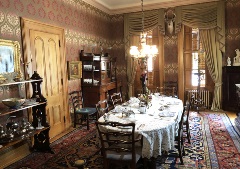
Omaha City Driving and Walking Tour
On this tour, we had up to four stops with options to get off for photo ops. We began by crossing the river into Council Building. The rest of the tour was a driving tour passing by Pioneer Courage Park where Buffalo statues are on display, the beautiful Omaha Central High School, and the Joslyn Art Museum. The present Mutual of Omaha Insurance building and the new one under construction were on our path, as well as Gene Leahy Park, the Orpheum Theater, Black Stone District, the Rose Theater, Cottonwood Hotel, Rocco’s Pizza, Charles Schwab Baseball Stadium, the Union Pacific murals, Old Town Omaha, and Warren Buffet’s office. A great way to catch a last glance the wonderful city of Omaha.
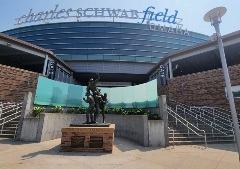
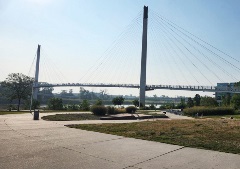
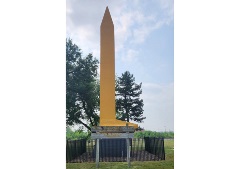
Significant Convention events also held were:
- Annual business meeting
- Lionel seminar
- Informational seminars and hobby clinics
- Junior member activities for young club members
- Famous "Get Acquainted Party"
- President's Welcoming Reception
- Reception for first-time attendees
- Saturday evening reception and banquet
July 7-13, 2024, will be a great memorable time. However, we can look forward now to the model railroad train shows, camaraderie and more at the Scranton convention in 2025.
These events held in Omaha are just a taste of the type of things in store for you, your family, and friends when you come to an LCCA convention and help us celebrate the annual anniversary of the "Best toy train club on the planet" by making each convention one of the best in Lionel Collectors Club Convention history. Members may register online for the Scranton Convention starting in mid-February 2025 or read the details of the events published in The Lion Roars, the club’s model train magazine. Non-members may join the club now and be prepared for a fabulous week of fun, great food, toy train shows and friendship with train operators and collectors who favor the Lionel brand and celebrate the world’s greatest hobby.
